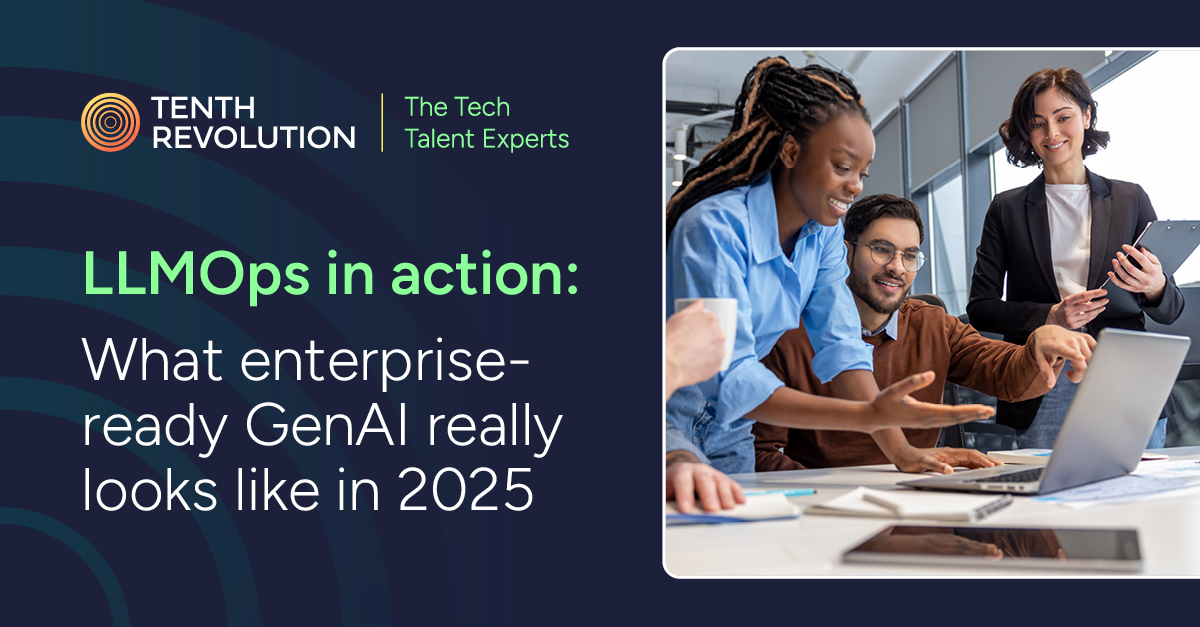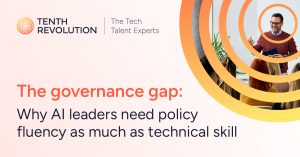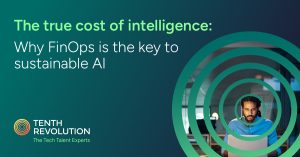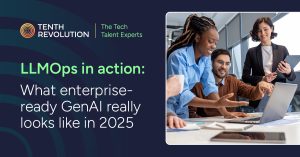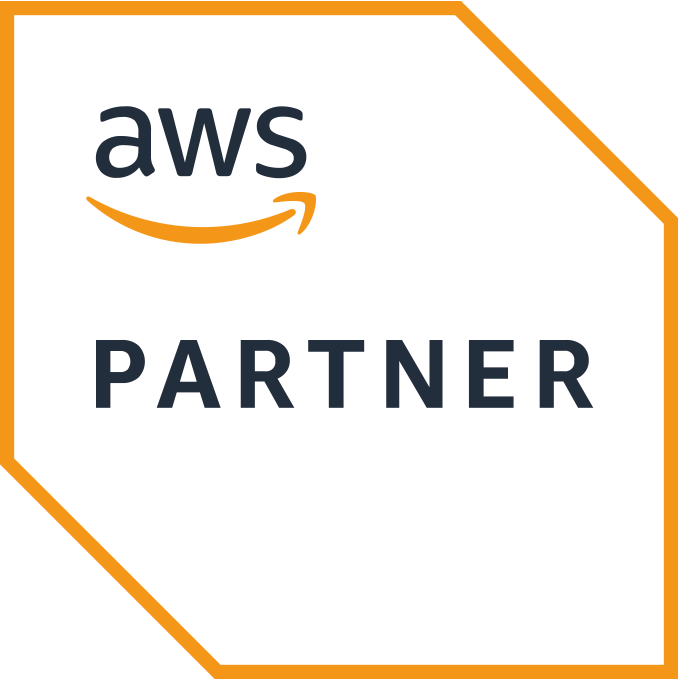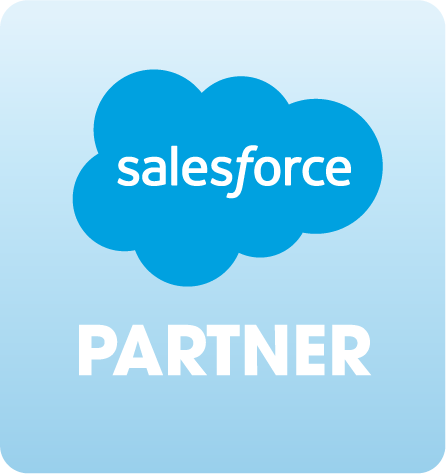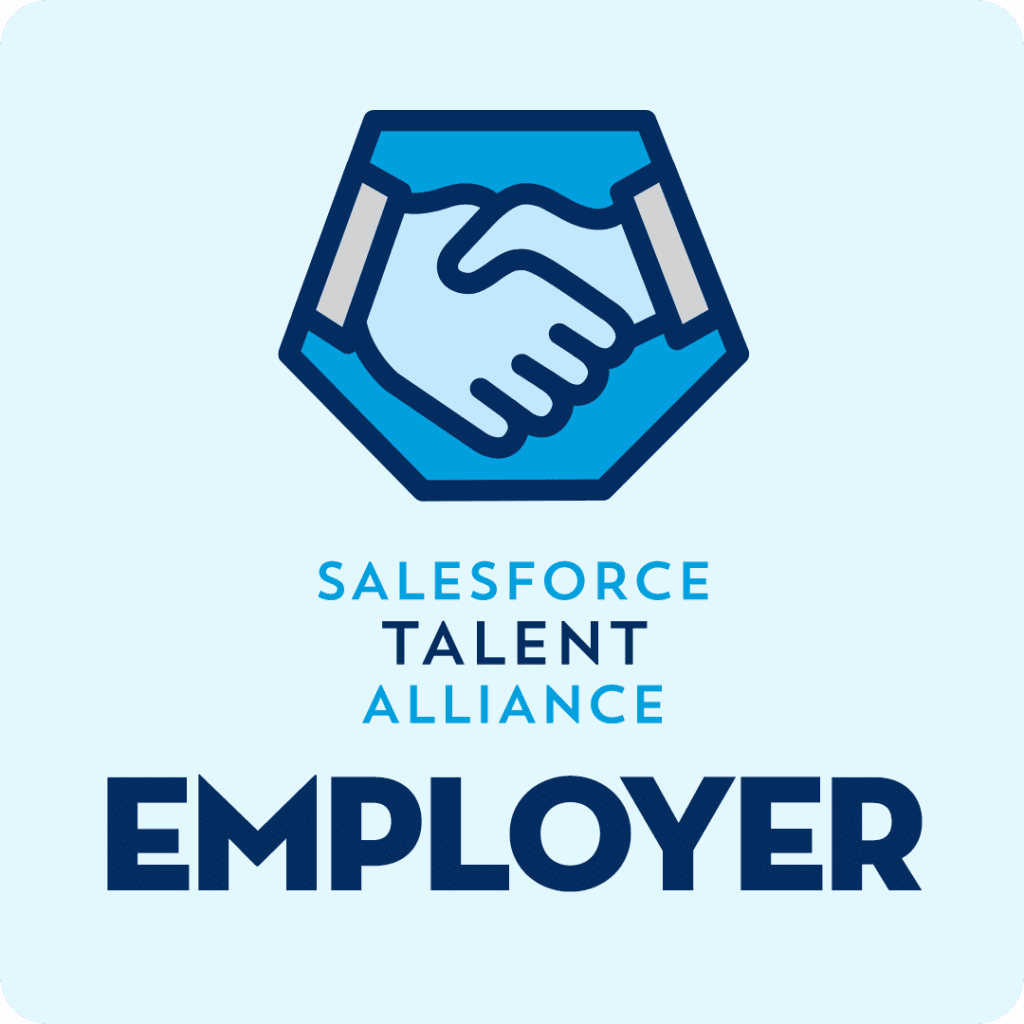Generative AI has left the lab and entered everyday operations.
The most forward-thinking enterprises now treat AI as a business-critical system. This shift brings new expectations around reliability, governance, and measurable return. In 2025, the organizations seeing the strongest results share a common approach built on Large Language Model Operations (LLMOps), retrieval-augmented generation (RAG), and clear accountability for how AI is designed, deployed, and monitored.
What LLMOps and RAG actually mean
As AI becomes embedded across industries, two technical foundations have emerged as essential for enterprise reliability: LLMOps and RAG. Understanding both helps leaders make smarter investment and hiring decisions.
LLMOps (Large Language Model Operations) refers to the set of processes and tools that help organizations manage the lifecycle of large language models, such as those used in generative AI systems. It borrows principles from DevOps and MLOps, focusing on version control, deployment pipelines, evaluation frameworks, and performance monitoring. With LLMOps in place, companies can:
- Deploy AI models safely and consistently across teams
- Track and roll back updates when needed
- Measure model accuracy, tone, and compliance before and after launch
- Manage costs by monitoring compute usage and inference efficiency
In practical terms, LLMOps helps enterprises treat AI not as an experiment but as a core part of their digital infrastructure.
Retrieval-Augmented Generation (RAG) is a design pattern that connects large language models to real-time, verified data sources. Instead of relying solely on what a model was trained on, RAG systems “retrieve” relevant documents or records at the moment of query, using that information to “augment” the model’s response. This means:
- Outputs are grounded in current, accurate information
- The system can explain where information came from
- Businesses can control data quality and reduce the risk of hallucinated answers
For leaders, RAG translates into more reliable, explainable, and compliant AI outcomes that align with brand and regulatory expectations.
From experiments to everyday operations
Early AI projects often lived in isolated parts of the business, producing limited value because they lacked shared infrastructure and oversight. Today’s enterprise AI systems resemble mature software platforms. They include deployment pipelines, version control, observability, and standardized guardrails from the start.
Strong implementations typically rest on three pillars:
- LLMOps for consistency and control: Prompts and models are versioned, deployments run through structured pipelines, and evaluation happens both before and after release.
- RAG-native design for reliability: Models retrieve live, contextual data from trusted sources to ensure grounded outputs and reduce drift.
- Governance as a standard practice: Policies, roles, and monitoring keep systems aligned with security, privacy, and brand requirements.
Leaders who want to scale these capabilities need the right people. Tenth Revolution Group helps organizations find and hire professionals with LLMOps and platform engineering expertise to build safe, repeatable AI delivery.
What LLMOps looks like in practice
LLMOps turns AI from experimental prototypes into dependable enterprise systems. Mature AI operations teams:
- Track versions of prompts, models, and datasets so updates remain traceable and reversible
- Automate testing to evaluate accuracy, tone, safety, and regression before production
- Monitor real-time metrics such as latency, token use, and error rates through centralized dashboards
- Manage costs with shared visibility into GPU utilization and inference efficiency
This structure reduces risk and gives leaders confidence that AI systems are performing as intended.
Why RAG-native has become standard
Retrieval-augmented generation, or RAG, connects AI models to curated, verified knowledge sources. This means responses are grounded in live data, producing reliable and explainable results. Effective RAG architectures use hybrid search, chunking that maintains context, and feedback loops to refine retrieval quality over time.
The result is higher factual accuracy, stronger traceability, and improved user trust. For leaders, it also means compliance and governance become easier to demonstrate.
If your business is building RAG pipelines or an AI-ready data platform, hiring the right talent is essential. Tenth Revolution Group helps organizations find and hire professionals skilled in retrieval design, indexing, and evaluation who can ensure models deliver trusted, high-quality outputs.
Governance and evaluation as daily work
As AI becomes embedded in day-to-day operations, governance has to move from theory to practice. Many enterprises now establish internal AI councils, integrate human review for sensitive workflows, and maintain audit trails that document how each output was generated.
Evaluation frameworks also evolve beyond technical accuracy. Modern AI programs measure business impact, compliance alignment, and customer experience outcomes alongside model performance. This holistic oversight ensures AI remains a driver of long-term value rather than short-term experimentation.
What leaders should prioritize in 2025
To achieve reliable, responsible, and scalable AI, executives should focus on five core priorities:
- Build multi-disciplinary teams: Bring together data, security, finance, legal, and business leaders early to balance innovation with governance.
- Set evaluation standards: Define success criteria, risk thresholds, and fallback processes before models go live.
- Adopt RAG-first patterns: Keep AI responses grounded in validated, current knowledge sources.
- Control operating costs: Treat GPU and inference spending as key financial metrics.
- Hire for LLMOps: Seek professionals who understand pipeline design, observability, and AI governance.
With these foundations in place, organizations can operationalize AI with confidence and demonstrate clear ROI.

